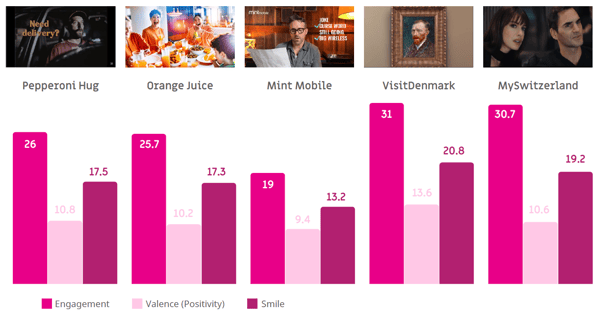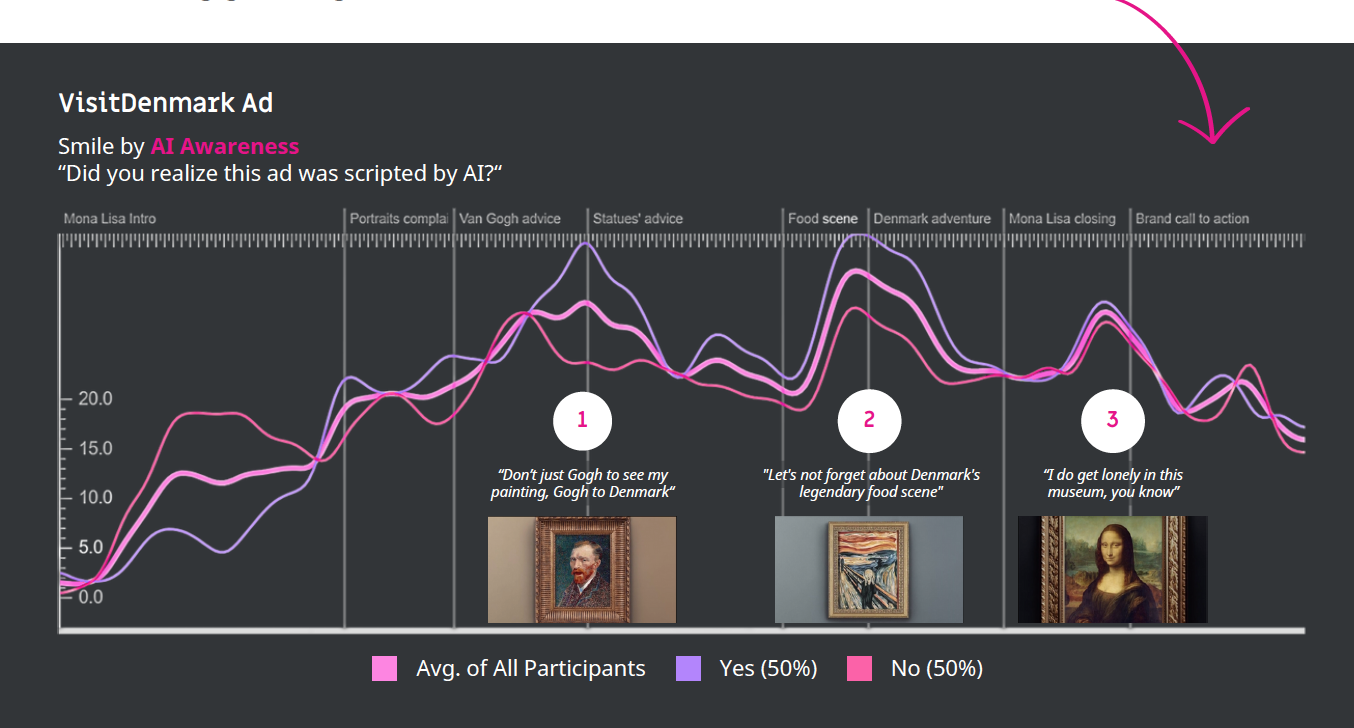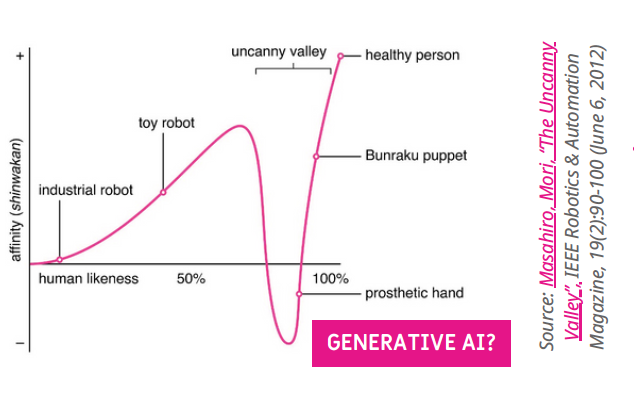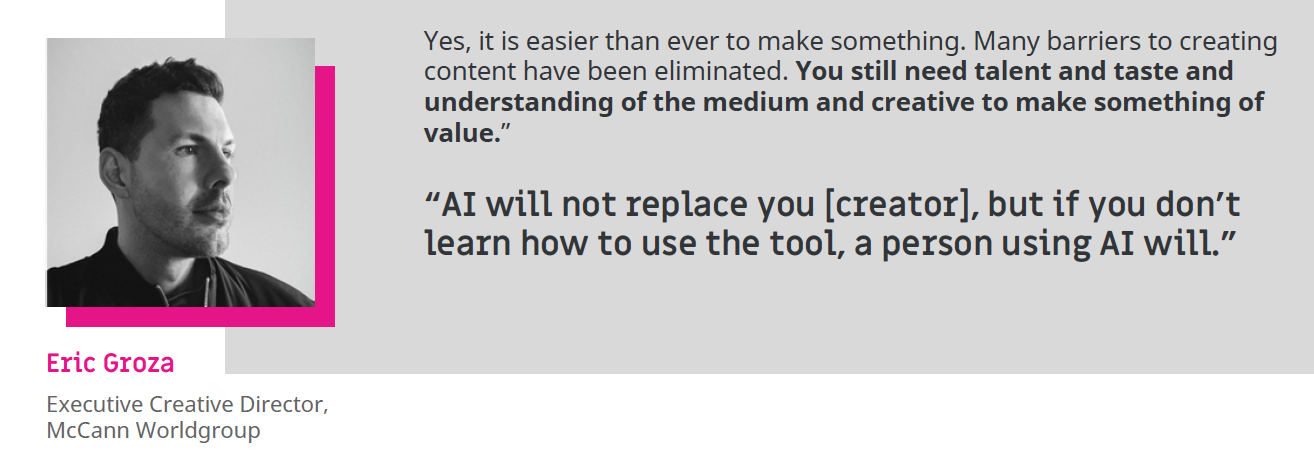In the ever-evolving landscape of advertising, the marriage of Generative AI and Emotion AI has ushered in a new era of creativity, engagement, and disruption. As we delve into the insights derived from the intersection of these two powerful technologies, several lessons have emerged from our Emotional ad testing, offering a glimpse into the potential and challenges of this transformative duo.
AI's Emotional Engagement: Breaking Traditional Barriers
Ads crafted with Generative AI, such as the Pepperoni Hug, Orange Juice, Mint Mobile, and VisitDenmark campaigns, showcase a remarkable emotional response and positive engagement. This phenomenon explains the virality of user-generated content produced with AI tools, with some videos exceeding 1 million views on platforms like YouTube. The emotional impact of these AI-generated ads stands on par with more traditional counterparts, such as the example of MySwitzerland.
The Laughter Factor: When Gen AI Goes Humorous
Notably, when AI takes the reins entirely, as witnessed in the Orange Juice ad, the awareness of AI creation becomes a differentiating factor. While smiles typically contribute to overall enjoyment, the distinctiveness of AI creation in this context triggers varied reactions. Viewers who are unaware of the AI script may find themselves less positively engaged and more disturbed, highlighting the importance of transparency in AI-generated content.
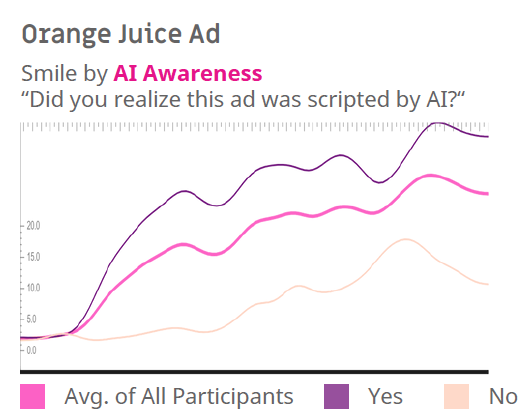
The Power of Clarity: Enhancing Emotional Response with AI Acknowledgment
When AI serves as a creative element, explicitly informing viewers about its involvement is crucial. The Mint Mobile ad, featuring ChatGPT, emphasizes this point. Surprisingly, a significant portion of the audience did not realize or recall that AI was at play. Those who did, however, exhibited a more positive engagement, underlining the impact of clarity in enhancing emotional responses to AI-generated content.
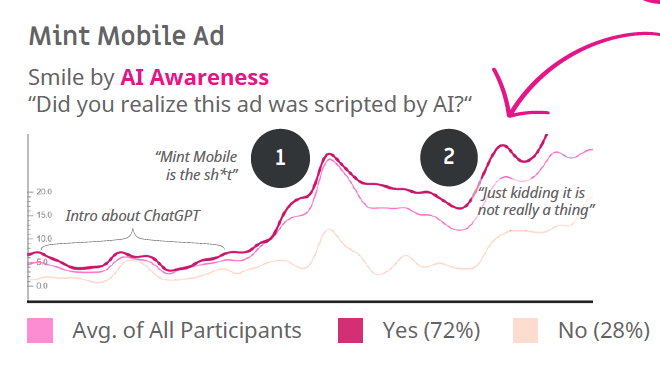
AI's Sense of Humor: Crafting Engaging Narratives
AI, when employed as a creative enhancement tool, has the potential to weave emotionally engaging stories. The VisitDenmark ad not only captivated audiences with AI-animated talking paintings but also elicited positive responses to AI-written jokes. Despite only half of the participants recognizing the AI involvement, the levels of positive engagement remained consistent, showcasing the versatility of AI in humor-driven narratives.
Navigating the Uncanny Valley: Impact on Emotional Positivity
The Uncanny Valley theory, suggesting discomfort with humanoid objects that imperfectly resemble humans, becomes evident in the visual aspects of Generative AI. Instances in Orange Juice and Pepperoni Hug, where AI-generated human faces and emotions triggered negative cognitive reactions, highlight the challenges in creating realistic animations. This uncanny valley effect may impact overall emotional positivity, adding a layer of complexity to the user experience.
Likability vs. Emotional Reaction: Striking the Right Balance
While fully AI-generated ads evoke robust emotional reactions, they may not always translate into claimed likability. The audience's perception of likability is a nuanced metric, and ads that seamlessly blend AI tools with human creativity, as exemplified by VisitDenmark, demonstrate the potential to rival traditional high-budget ads in likability.
In the words of Eric Groza, Executive Creative Director at McCann Worldgroup, AI may be a powerful tool, but its true value is unlocked when coupled with human talent, taste, and understanding of the creative medium. The lesson is clear: AI is a facilitator, not a replacement, for the human touch in advertising.
The Bottom Line
As we navigate the uncharted waters of Generative AI and Emotion AI convergence in advertising, it's evident that the key to success lies in the harmonious collaboration between AI and human creativity. The disruption is real, the challenges are apparent, but the potential for groundbreaking campaigns is limitless.
Disclaimer: AI-Generated Imagery has been used in the creation of the content.



